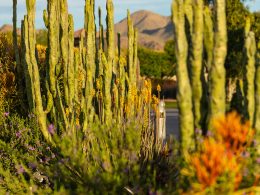Indoor air pollution is a growing concern, with many people spending the majority of their time indoors. Poor air quality can lead to a range of health problems, including respiratory issues, headaches, and fatigue. Fortunately, there is a natural solution to this problem: plants. Certain plants have been shown to effectively purify the air, removing harmful toxins and pollutants. In this article, we will explore 10 plants for air purification, providing you with the ultimate guide to transforming your home into a healthier space.
1. Spider Plant (Chlorophytum comosum)
The spider plant is one of the most popular plants for air purification, and for good reason. It is easy to care for, and it effectively removes formaldehyde, xylene, and toluene from the air. These chemicals are commonly found in household products such as adhesives, paints, and cleaning agents. The spider plant is also known for its ability to produce oxygen, making it a great addition to any room.
2. Peace Lily (Spathiphyllum)
The peace lily is another popular choice for air purification. It is particularly effective at removing benzene, a chemical found in gasoline, plastics, and synthetic fibers. The peace lily also removes formaldehyde, trichloroethylene, and xylene from the air. This plant is easy to care for and produces beautiful white flowers.
3. Aloe Vera (Aloe barbadensis)
Aloe vera is a well-known plant for its healing properties, but it is also an excellent air purifier. It effectively removes formaldehyde from the air, which is commonly found in household cleaning products, toilet paper, and tissues. Aloe vera is also easy to care for and can be used for a range of other purposes, such as treating burns and moisturizing the skin.
4. Bamboo Palm (Chamaedorea seifrizii)
The bamboo palm is a great choice for air purification, particularly in larger rooms. It effectively removes formaldehyde, benzene, and trichloroethylene from the air. The bamboo palm is also known for its ability to add moisture to the air, making it a great choice for dry climates.
5. Snake Plant (Sansevieria trifasciata)
The snake plant is a hardy plant that is easy to care for and is particularly effective at removing formaldehyde from the air. It is also known for its ability to produce oxygen at night, making it a great choice for bedrooms. The snake plant has a unique appearance, with long, upright leaves that resemble snakes.
6. English Ivy (Hedera helix)
English ivy is a popular plant for air purification, particularly in areas with high levels of mold. It effectively removes mold spores from the air, as well as formaldehyde and benzene. English ivy is easy to care for and can be grown in a range of conditions.
7. Rubber Plant (Ficus elastica)
The rubber plant is a great choice for air purification, particularly in areas with high levels of formaldehyde. It effectively removes this chemical from the air, as well as benzene and trichloroethylene. The rubber plant is easy to care for and produces large, glossy leaves.
8. Golden Pothos (Epipremnum aureum)
The golden pothos is a popular plant for air purification, particularly in areas with high levels of formaldehyde. It effectively removes this chemical from the air, as well as benzene and carbon monoxide. The golden pothos is easy to care for and produces long, trailing vines.
9. Boston Fern (Nephrolepis exaltata)
The Boston fern is a great choice for air purification, particularly in areas with high levels of formaldehyde. It effectively removes this chemical from the air, as well as benzene and xylene. The Boston fern is easy to care for and produces beautiful, feathery fronds.
10. Areca Palm (Dypsis lutescens)
The areca palm is a great choice for air purification, particularly in larger rooms. It effectively removes formaldehyde, benzene, and carbon monoxide from the air. The areca palm is also known for its ability to add moisture to the air, making it a great choice for dry climates.
In conclusion, plants are a natural and effective solution to indoor air pollution. By incorporating these 10 plants for air purification into your home, you can transform your space into a healthier and more enjoyable environment. Remember to care for your plants properly, providing them with adequate sunlight, water, and nutrients. With a little bit of effort, you can enjoy the benefits of cleaner air and a more beautiful home.











